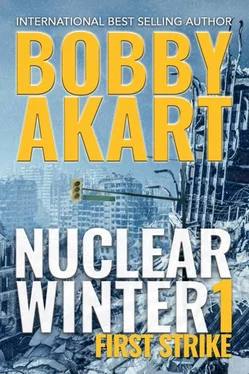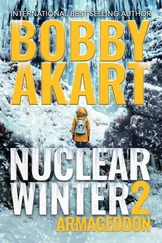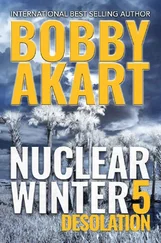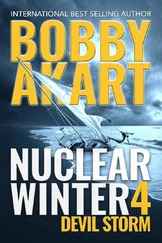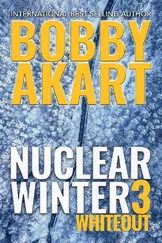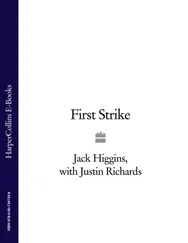“That’s easy for them to say,” shot back the president. “They’re responsible for arming Iran and Pakistan in the first place. Everyone might note who the aggressors are in all of this. It’s not our allies.”
Harrison Chandler, who as the president’s chief of staff was anything but a yes-man, provided some context. “Sir, I’m not defending their actions. That said, both Israeli and Indian provocations caused tensions to escalate. Do I believe the Pakistanis and Iranians are blameless? Absolutely not. Now we have to be prepared for the aftermath.”
The president turned to the secretary of defense, who was present in the PEOC’s large conference room. He was on the phone, but President Helton interrupted him.
“You’ve raised the defense readiness condition?”
In the event of a national emergency, a series of seven different alert conditions, known as LERTCONs, can be issued. The seven alerts include two emergency conditions, or EMERGCONs, that are national-level reactions in response to an attack on the U.S. mainland from foreign intercontinental ballistic missiles. In the event of a major attack on American or allied forces overseas, the defense emergency levels are elevated under EMERGCON. Likewise, if an air defense emergency exists, such as hostile aircraft or inbound conventional missiles were considered imminent, then the EMERGCON levels were raised.
The other five alert levels fall under national defense readiness conditions, or DEFCONs, a term more widely known among the general public. These levels start at DEFCON 5, which is normal peacetime conditions, up to DEFCON 1, the maximum force readiness that coincides with EMERGCON alerts.
In the history of the United States, DEFCON 1 had never been initiated. During the Cuban missile crisis, the U.S. Strategic Air Command was placed on DEFCON 2 for the first time, without President Kennedy’s authority. The action almost triggered a nuclear war that October.
With each passing day during that crisis, the U.S. military inched toward war as it prepared to strike targets within the former Soviet Union. The world held its collective breath during those days in October 1962.
“Mr. President, at the moment, we have no indication of a direct threat to the U.S. or our military installations abroad. Therefore, we have remained at DEFCON 3, as you instructed following the Iranian attack on Israel and their counterattack.”
The president turned toward the undersecretary of state. “Are you able to contact either government? I assume both capitals were targeted.”
“Yes, sir,” the undersecretary responded. “Devastatingly so. We’ve reached out to our counterparts in China and Russia, as you know, seeking a means of gathering information about the Pakistani government. The Russians are close to the New Delhi government, as are the French. Nobody has received confirmation as to the status of either heads of state or their parliaments.”
“I might add, Mr. President,” began the defense secretary, “someone must be in charge because there are continuing targeted strikes on both sides of the border. It appears, incredibly, that they intend to empty their respective nuclear vaults.”
The president remained standing throughout. He dropped his chin to his chest as he contemplated the deaths of millions of innocent people, none of whom asked to be embroiled in all-out nuclear war. He finally looked up to his advisors.
“Have they all gone batshit crazy?”
His question was crassly worded but clearly understood.
“Mr. President, tensions have been festering—” began the undersecretary of state before the president cut him off.
“No, I get that. I’m talking about all of these rogue nations who have their fingers on the nuclear triggers. Who’s next? Is it like a damned lunacy epidemic? Is Kim Jong Un the next maniacal despot to fire off nukes?”
The undersecretary of state really didn’t want to answer the question, but the president’s stare had him locked in his sights. “Well, sir, the only rogue nation by U.S. diplomatic definition is North Korea. If you are looking for some kind of pattern from these two events, there’s no indication either South Korea or our allies in Tokyo would dare initiate military hostilities with the DPRK, especially under these circumstances.”
The president, who was generally forthcoming about his weaknesses, especially as it related to foreign policy, repeated the criticisms by the war hawks of his response to the Iranian-Israeli conflict.
“Let’s say my friends across the aisle were right, and my failure to stand by Israel was seen as a sign of weakness across the globe. Might this have emboldened India to launch the airstrikes and Pakistan to counter with nukes? Maybe. Both sides have seen us as all talk and no action, standing down when our allies were in need. Therefore, they took advantage of the chaos in the Middle East to make their move.”
The undersecretary of state squirmed in his chair, but to his credit, he continued in an honest assessment of the president’s stance, how it was perceived, and how it might relate to North Korea.
“Sir, I’m going to respond this way with a caveat. I don’t speak for the secretary of state. However, I believe our assessment of the North Korea situation is closely aligned.”
“Understood,” said the president, who took his seat at the head of the table for the first time.
The undersecretary explained, “When North Korea reneged on its promise to forgo nuclear weapons in the early 1990s, the Clinton administration put together an accord deemed the Agreed Framework that paved Pyongyang’s path to nuclearization. Kim Jong-il withdrew from this Nuclear Nonproliferation Treaty in 2003, confirming that he intended to build a nuclear weapon.
“President George W. Bush pushed for the China-led six-party talks with North Korea that yielded no agreement. When North Korea tested its second nuclear weapon in 2009, President Obama opted for a strategic patience approach. This policy led to an expansion of the North Korean nuclear program, and three subsequent tests showed just how misguided these approaches have been.”
The undersecretary paused and caught his breath. He gulped before he stated his opinion. “Mr. President, it’s time to acknowledge that North Korea has never been interested in negotiating away its nuclear deterrent. Their goals have always been to bide time, get sanctions removed, or even secure humanitarian aid from the West.
“Of course, we should continue to leave the door open for serious discussions if the situation changes. However, sir, in my opinion, our government does our citizens and the world a disservice if we continually discount the central threat of the DPRK’s nuclear weapons to the stability of the Korean Peninsula, Japan, and our western shores.”
President Helton studied the undersecretary, a young man compared to the elderly military personnel in the room. He was anxious to learn more from him, but an aide had rushed into the room.
“We’ve made contact with the prime minister of India.”
Tuesday, October 22
U.S. State Department
Washington, DC
Peter had been rushing up and down the halls of the State Department since the news broke about ballistic missiles sailing across the South Asia subcontinent. He raced out of his condo and made it to Foggy Bottom in record time, faster than other journalists assigned to State could ride their subway trains.
The story, and the administration’s response, was certainly foremost on his mind. However, he’d begun to get a nagging feeling that the president, and even the secretary of state, were focused on another nuclear-equipped bad actor, North Korea.
Читать дальше
